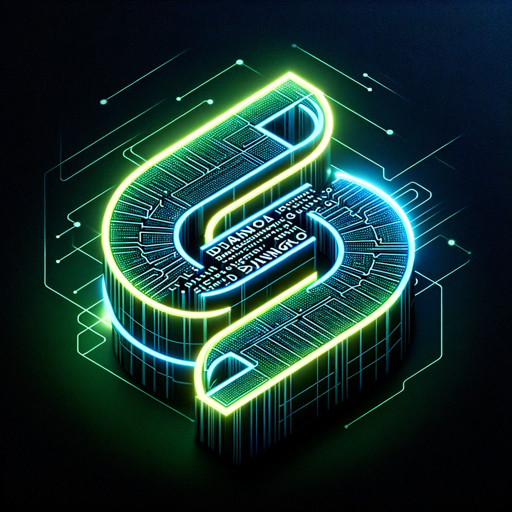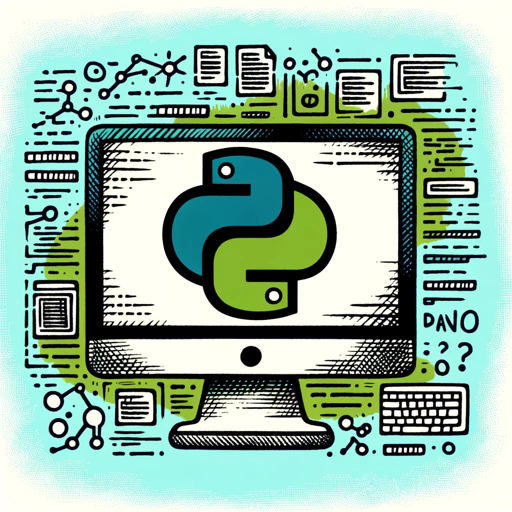Django Rest API-AI-Powered Django REST API
AI-driven Django REST framework for efficient API development.
Ask me anything about Python and Django REST API
Related Tools
Load More
Django Copilot
Your personal Django assistant and code generator with a focus on responsive, efficient, and scalable projects. Write clean code and become a much faster developer.

Django Pro
Your Dedicated Assistant for Streamlined Python and Django App Development

FastAPI
A helpful guide for learning and using FastAPI in development.

Django Dev Helper
Your go-to Django development assistant.

FastAPI
Your personal Fast API assistant and code generator with a focus on responsive, efficient, and scalable projects. Write clean code and become a much faster developer.

BACK END FAST API
API Gateway & Security Expert
20.0 / 5 (200 votes)
Introduction to Django Rest API
Django Rest Framework (DRF) is a powerful and flexible toolkit for building Web APIs in Django. Its design is rooted in providing a simple and powerful way to create RESTful web services, adhering to the REST architecture. DRF abstracts much of the repetitive tasks in API development, offering tools and utilities for building, testing, and maintaining APIs. Key features include serializers for data parsing and validation, viewsets and routers for handling URL routing, and extensive support for authentication and permissions.

Main Functions of Django Rest API
Serializers
Example
Serializers in DRF are used to convert complex data types, such as querysets and model instances, into native Python datatypes that can then be easily rendered into JSON, XML, or other content types. They also handle deserialization, transforming parsed data back into complex types.
Scenario
For example, in a blogging application, a PostSerializer can be used to convert Post model instances into JSON for API responses, and validate incoming JSON data for creating or updating posts.
Viewsets and Routers
Example
Viewsets provide a way to define the logic for handling different HTTP methods (GET, POST, PUT, DELETE) in a single class, reducing code redundancy. Routers automatically create URL confs for viewsets, simplifying URL routing.
Scenario
In an e-commerce application, a ProductViewSet can handle listing, creating, updating, and deleting products, while a DefaultRouter can generate the necessary URLs for these actions without manual URL configuration.
Authentication and Permissions
Example
DRF offers several authentication methods, including token-based authentication, session-based authentication, and OAuth. Permissions classes are used to control access to API views based on the user's authentication status or specific user attributes.
Scenario
In a healthcare application, TokenAuthentication can ensure that only authenticated users can access patient data, and custom permissions can restrict data modification to users with the 'doctor' role.
Ideal Users of Django Rest API
Web Developers
Web developers looking to build robust, scalable web APIs will find DRF invaluable. Its high-level abstractions, combined with Django's powerful ORM, allow developers to focus on writing application-specific logic rather than dealing with low-level API implementation details.
Mobile App Developers
Mobile app developers who need a backend API to power their mobile applications can use DRF to quickly set up RESTful endpoints. The framework's extensive support for different authentication methods and data formats ensures seamless integration with mobile apps, whether they're developed for iOS or Android.

How to Use Django Rest API
Step 1
Visit aichatonline.org for a free trial without login, also no need for ChatGPT Plus.
Step 2
Install Django and Django REST framework. Use the commands 'pip install django' and 'pip install djangorestframework'.
Step 3
Create a new Django project and app using 'django-admin startproject projectname' and 'python manage.py startapp appname'.
Step 4
Configure the Django settings to include 'rest_framework' and the created app in the INSTALLED_APPS section. Also, configure the database settings as needed.
Step 5
Create serializers, views, and URL routes in the Django app to handle RESTful API requests. Use Django REST framework’s features like ModelSerializer, APIView, and routers for optimal development.
Try other advanced and practical GPTs
Recipe Simplifier
AI-Powered Recipe Simplification for All

Recipe Wizard
Your AI-powered kitchen assistant.

Hindu Myth Explorer
AI-driven exploration of Hindu mythology

Curriculum Crafter
AI-Powered Curriculum Design Made Easy

Curriculum Vitae Builder
AI-Powered Resume Crafting Tool

Ontario Report Card Comments & Curriculum Planning
AI-powered Ontario curriculum-based comments

REST API Sherpa
AI-powered insights for robust API design.

Ad Skripter
AI-powered ads that convert

SEM Strategiser
AI-driven solutions for SEM success

creative
AI-Powered Creativity for Everyone
Creative Copywriter
AI-Powered Creativity for Your Ads

Creative Spark
Unleash creativity with AI power.

- Web Development
- Data Integration
- API Development
- Data Serialization
- Mobile Backend
Django Rest API Q&A
What is Django REST framework?
Django REST framework (DRF) is a powerful and flexible toolkit for building Web APIs in Django. It provides features like serialization, authentication, and view classes that help developers create robust APIs.
How do serializers work in Django REST framework?
Serializers in DRF convert complex data types, such as Django QuerySets, into native Python data types that can then be easily rendered into JSON, XML, or other content types. They also handle deserialization, allowing parsed data to be converted back into complex types.
Can I use Django REST framework for real-time applications?
While Django REST framework is not specifically designed for real-time applications, it can be integrated with WebSockets or Django Channels to support real-time features, providing a flexible solution for various types of applications.
What are viewsets in Django REST framework?
Viewsets in DRF are classes that provide the logic for handling multiple views. They can be used to combine the logic for multiple related views into a single class, simplifying the development process and reducing the amount of boilerplate code.
How can I secure my Django REST API?
Securing a Django REST API involves several steps: implementing authentication mechanisms like JWT or OAuth, using permissions and throttling to control access, validating input data rigorously, and ensuring the use of HTTPS to protect data in transit.